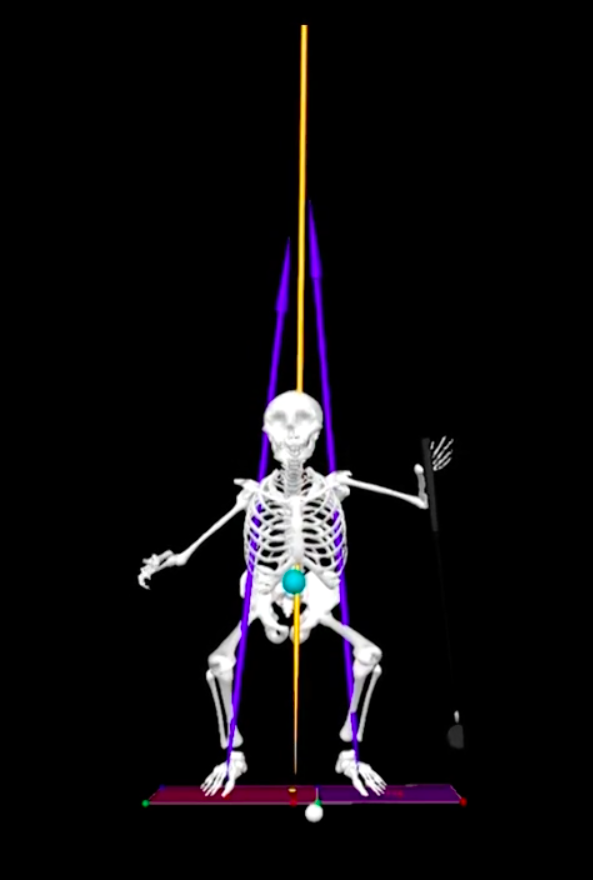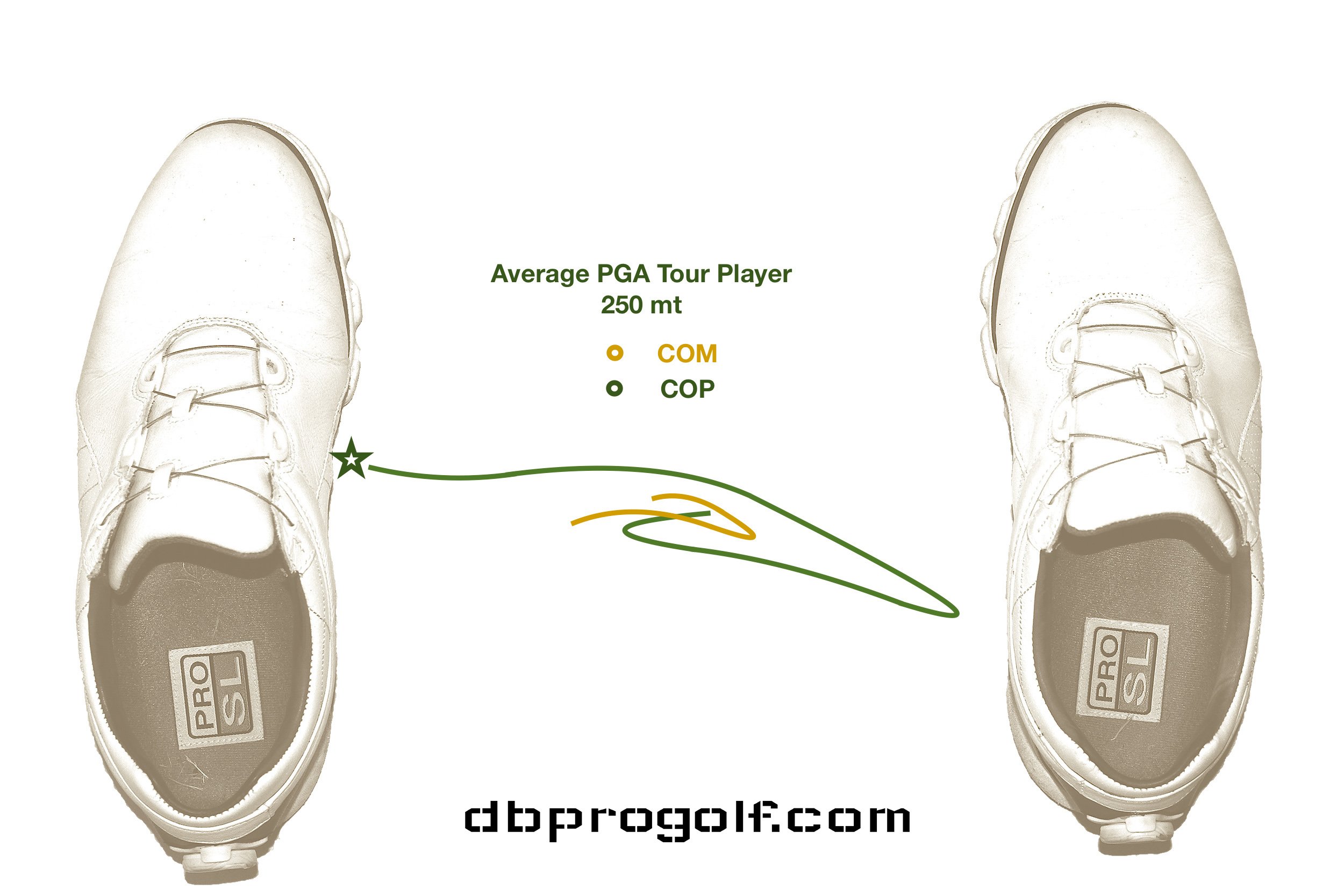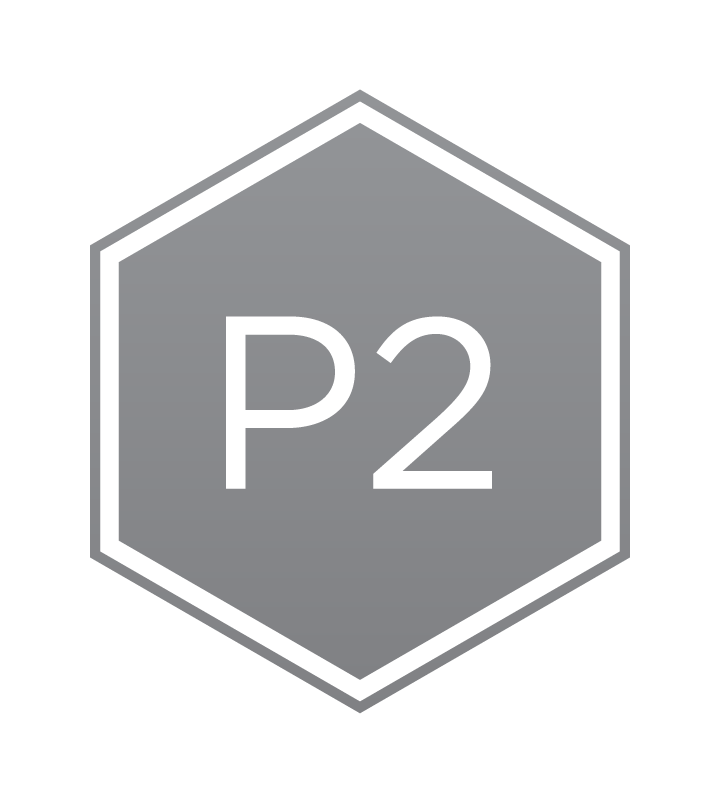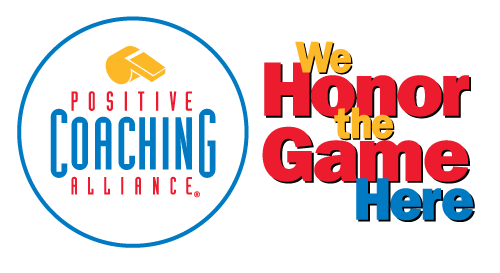The ground reaction force (GRF) is the force exerted by the ground on a body in contact with it. Recalling Newton’s 3rd law:
“For every action, there is an equal and opposite reaction”.
As we push on the ground, the ground “pushes” back exactly the same amount.
In which way Newton’s law helps the golfer in creating speed?
The force the golfer is producing show how the body is going to move, more specifically how it will accelerate. A great example whilst you are walking: you are pushing on the ground with your back foot creating a force (tilted forward in the direction where you are walking) that is pushing you forward. Another simple example is the vertical jump.

As you can see here, the downward movement of the body generates a tremendous amount of vertical force (blue arrows represent forces generated by a single foot, the yellow is a combination of the forces of both feet). Once we slowly descend and we start jumping up, the ground reaction force has to be greater than the body weight. When we reach the bottom of the loading, we are continuing to use the same large vertical force to dry ourselves up and maintaining the large force just before our feet leave the ground. Once off the ground, the GRF will be zero.
The greater the GRF, the greater the angular acceleration (rotation) will be for the golfer.
In order to understand how the ground reaction force works is crucial to know the concepts of center of pressure and center of mass.
Center of mass (COM) is literally the center of mass of the body, situated slightly above the belly button in a male standing straight and slightly lower in a female just because the male has the tendency to have more mass in the upper body. This point is not fixed, it can move: up, down, left and right. If I load my legs (going down) my COM will move down. As I have more mass in front of the spine and my spine angle is bended toward the ball at the address position, the COM will move toward the right foot during the backswing (for a right-hand golfer). However, the COM trace is considerate small compared with the center of pressure trace (COP).
Center of pressure (COP) is the average location of the vertical force applied by the golfer on the ground. If a 100kg person is standing still equally on both feet the COP will be distributed exactly 50% on the left foot and 50% on the right foot. It is the only moment when center of pressure (COP) and center of mass (COM) are aligned together.
Here you can find some illustrations that will help you to understand better the concepts of the transfer of the COM and COP during the swing from address position to impact and how they work.
The COP is moving in relation to how strongly I’m pushing on the ground and NOT how much the COM is shifting.
In other words, there is no direct correlation between the COM and COP.
View in the graphic below how much the COP is moving from side to side compared to the COM that is remaining around the original position. The center of pressure has to move rapidly to the trail foot (the right foot for the right-hand golfers) in the early/middle backswing and then shift rapidly to the lead foot during the early downswing. The “star” is where the COP is located at the impact.



In the next sequence, you will understand better the COP and COM motion and how the most powerful PGA Tour Players and Word Long Driver Champions hitters create a lot of angular rotation using the ground reaction force.
A study held in Penn-State University, in Pennsylvania has found two particular instants in the swing where the golfer has to have the maximum pressure, first on the back foot and then on the front foot, which occurs when the left arm is around the parallelism with the ground in the backswing and in the downswing.

@Penn-State University
L: Left foot; R: Right foot
1) COM and COP match up together (the yellow arrow and blue dot projection on the ground coincide all together). Just before the golfer start to swing back, the COP is shifting slightly toward the left foot. It seems a contradiction, but this little movement helps the golfer transfer the COP and COM faster to the right side.
COP average Tour Data address position: 55% L – 45% R
COP average Tour data mid-backswing: 20% L – 80% R
3) Top of the backswing (the club stops, changing direction from backswing to downswing): In this frame, the right foot already started pushing hard toward the target.
COP average Tour data top-back: 50% L – 50% R
4) Lead arm parallel (downswing): Tour players have the max pressure on the lead foot. It’s time to jump up as strong as you can using the lead foot, generating a lot of vertical force.
COP average Tour data mid-down: 80% L – 20% R
5) Impact: the strongest hitters have the left foot like an airborne, due to the strong boost coming from the lead leg. The stronger you push from right to left first and then up with your lead foot, the more tilted away from the target your back will be. This allows you to generate the max GRF.
COP average Tour data impact: 80% L – 20% R
Left foot as an airborne: 0% L – 100% R toe (here an example of Bubba Watson)
Therefore, the perfect GRF sequence in the downswing would be:
1) Horizontal force - Push sideways R to L2) Torque - Angular rotation3) Vertical force - Jump up with a strong left leg action
This is the greatest action you can achieve,
helping to generate a lot of club head speed.
#adriveawayfromyourbestgolfTeam DBPROGOLF

















